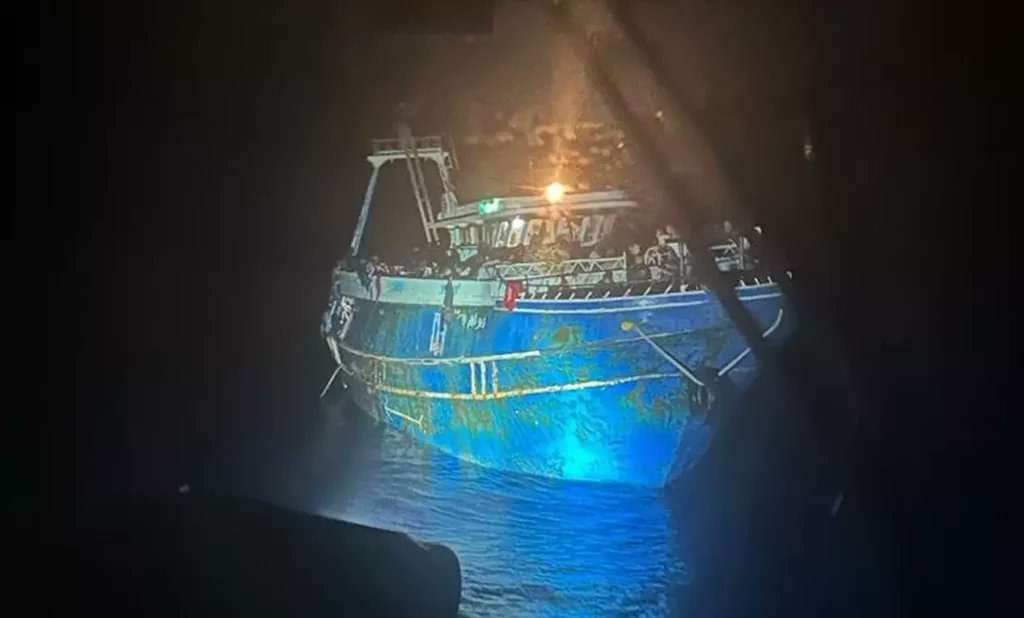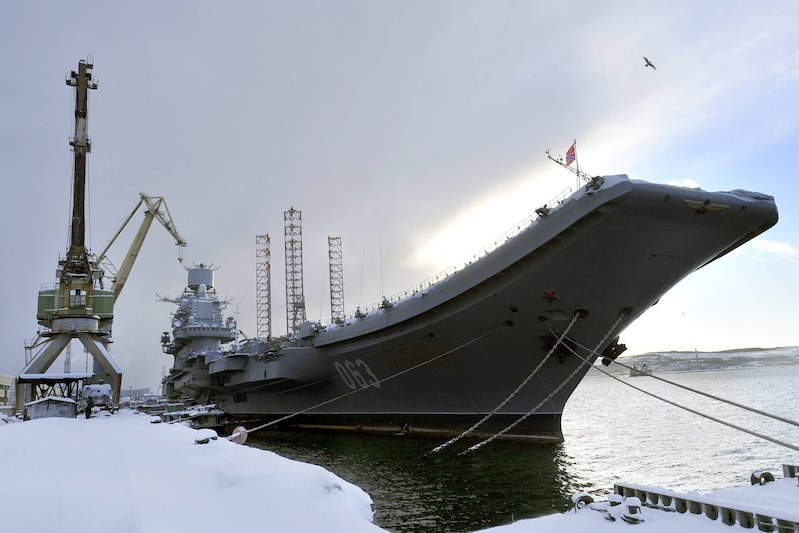
Hi-tech probe implicates coastguard in Greek shipwreck.
Extensive investigation challenges official narrative on trawler tragedy, revealing failure to provide aid and tampering with survivor statements
Attempts by the Greek coastguard to tow a fishing trawler carrying hundreds of migrants may have caused the vessel to sink, according to a new investigation by the Guardian and media partners that has raised further questions about the incident, which left an estimated 500 people missing
The trawler carrying migrants from Libya to Italy sank off the coast of Greece on 14 June. There were 104 survivors.
Reporters and researchers conducted more than 20 interviews with survivors and drew on court documents and coastguard sources to build a picture of missed rescue opportunities and offers of assistance that were ignored. Multiple survivors said that attempts by the Greek coastguard to tow the vessel had ultimately caused the sinking. The coastguard has strenuously denied that it attempted to tow the trawler.
The night that the trawler capsized, 47 nautical miles off Pylos, in south-western Greece, was reconstructed using an interactive 3D model of the boat created by Forensis, a Berlin-based research agency founded by Forensic Architecture, which investigates human rights violations.
The Guardian, German public broadcaster ARD/NDR/Funk, Greek investigative outlet Solomon, and Forensis have conducted a joint investigation providing one of the most comprehensive narratives to date regarding the trawler’s journey leading up to its sinking. The inquiry uncovered fresh evidence, including the presence of a coastguard vessel stationed at a nearby port that was never deployed to the incident. It also revealed that Greek authorities declined offers of assistance from Frontex, the EU border and coastguard agency, not just twice as previously reported, but three times.
Forensis conducted a detailed analysis of the trawler’s final hours before the sinking, utilizing various sources such as the coastguard’s log, the captain’s testimony from the coastguard vessel, flight paths, maritime traffic data, satellite imagery, videos captured by nearby commercial vessels, and other available information. The investigation uncovered discrepancies within the official account of events, including inconsistencies related to the trawler’s direction and speed.
Significantly, the inquiry revealed that the overcrowded trawler altered its course westward upon encountering the single Greek coastguard vessel dispatched to the scene. Multiple survivor testimonies provided to the Guardian and Greek prosecutors indicated that the coastguard had informed the migrants that they would be led to Italy, contradicting the official narrative that the trawler had changed direction voluntarily. Furthermore, the investigation indicated that the trawler had subsequently turned south and remained nearly motionless for at least an hour until a second, fatal towing attempt occurred, as described by survivors.
Using the 3D model, two survivors provided details of the towing process, while three others, situated inside or on the lower deck of the vessel, described a sudden propulsion forward, similar to that of a rocket, even though the engine was not running. These accounts strongly suggest an attempted towing.
Another survivor independently mentioned overhearing individuals shouting about a rope being attached by the “Greek army” and recalled being towed for approximately 10 minutes shortly before the trawler sank. Reflecting on the map of events and his own recollections from that night, the survivor expressed a belief that they were being pushed out of Greek waters to relinquish responsibility.
Maria Papamina, a lawyer from the Greek Council for Refugees, one of the two legal organizations representing 40 to 50 survivors, stated that her team had been informed of two separate accounts of towing attempts. Court documents further reveal that seven out of eight survivors provided depositions to the civil prosecutor on June 17 and 18, describing the presence of a rope, towing, and a strong pulling force.
Due to the lack of visual evidence, it is challenging to definitively establish the precise circumstances surrounding the sinking. Numerous survivors reported having their phones confiscated by the authorities, with some mentioning that they had captured videos moments before the incident. Uncertainties arise regarding why the newly acquired Greek coastguard vessel present at the scene did not record the operation using its thermal cameras. This vessel, known as the 920, received 90% funding from the EU to enhance Frontex capabilities in Greece and is part of the joint operations of the EU border agency in the country. Frontex recommends that “if feasible, all actions taken by … Frontex co-financed assets should be documented by video consistently

According to official statements from the Greek coastguard, the operation was not recorded as the crew was primarily focused on the rescue efforts. However, a coastguard source stated that cameras do not require continuous manual operation and are specifically designed to capture such incidents.
The ship’s log contains evidence of masked individuals, described by two survivors as attaching a rope to the trawler. The log also includes an entry about the participation of a special operations team called KEA, which joined the 920 vessel that night.
Coastguard sources explained that deploying KEA, typically used in high-risk situations such as suspected arms or drug smuggling at sea, would not be uncommon considering the unknown status of the vessel. However, one source suggested that the presence of KEA personnel indicated that the vessel should have been intercepted based on security and maritime safety considerations alone.
According to a source, the failure to dispatch closer assistance to the incident is deemed “incomprehensible.” The 920 vessel was deployed from Chania in Crete, approximately 150 nautical miles away from the sinking site. The coastguard had access to somewhat smaller but still capable vessels stationed in Patras, Kalamata, Neapoli Voion, and even Pylos itself, as per the source.
The 920 vessel received orders from the coastguard headquarters to “locate” the trawler around 3 pm local time on June 13. However, contact was not established until close to midnight. An eyewitness official confirmed the presence of another vessel stationed in Kalamata on June 14, which could have reached the trawler within a couple of hours. The source expressed that the situation demanded a comprehensive response, emphasizing that all available resources should have been deployed to assist the trawler, as it was evidently in urgent need of help.
On the morning of June 13, both the Greek coastguard and Frontex were notified about the trawler. The agencies had taken aerial photographs of the boat; however, no search and rescue operation was initiated. The Greek authorities claimed that the trawler had refused assistance, leading to their decision. At 5:53 pm local time, authorities received an urgent SOS, reportedly relayed to them by the small boats emergency hotline Alarmphone, which had been in contact with individuals on board the trawler.



